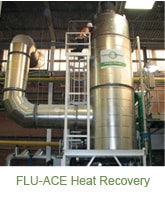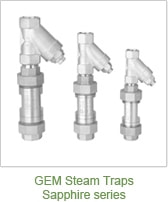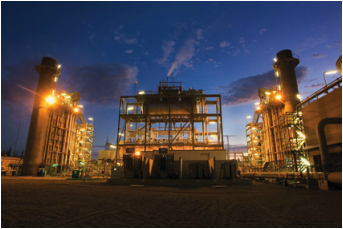|
Improving energy efficiency in the industrial sector is being prioritised in many countries because of its importance in the pursuit of energy supply security, increasing economic competitiveness and in reducing greenhouse gases emissions. One of the most energy-intensive industries in North America and Europe, is pulp and paper. According to Statistics Canada, in 2014, the pulp and paper industry accounted for 24% of the total energy consumed by all manufacturing operations in the country. This was down from 31% in 2005. This decline reflects changes in the demand for certain paper products such as newsprint (Canada’s primary newsprint market, the United States, witnessed a considerable fall-off in newspaper circulation as more readers migrated to digital media sources), as well as energy efficiency improvements at various mills. Typical paper mills use most of their energy in the pulping and drying processes, but the specific energy consumption in pulp and paper production is a result of several factors, including plant size, product mix, processes used, the technical age of the mill, feedstock quality, plant capacity utilization, and climate conditions. Investment to improve energy efficiency in the pulp and paper industry can deliver large energy savings, improved productivity, and reduced environmental pollution. Opportunities to improve energy efficiency include: heat recovery, cogeneration, increased use of (self-generated) biomass fuel, and increased recycling of recovered paper, efficient motors and improved efficiency of steam use. The pulp and paper industry requires a typically high amount of power and heat in forms of hot air and/or steam. And, with such a high, steady demand for heat as well as power, many pulp and paper plants are perfectly positioned to take advantage of the benefits offered by Thermal Energy’s best-in-class heat recovery, cogeneration, and steam trap solutions.  Our FLU-ACE® heat recovery technology can recover as much as 90% of the heat normally lost through dryer section / hood exhausts in the form of water at 50°C to 70°C. This is possible using the FLU-ACE’s unique direct contact (gas/liquid) packed-tower design, enabling optimal recovery of both sensible and latent heat, in widely varying operating conditions. The pulp and paper industry remains a prime candidate for cogeneration. Thermal Energy’s Super-Efficient Cogeneration™ solutions can provide up to 70% savings on electrical costs at a self-generated kWh cost of less than $0.04/kWh, and an additional 10% to 20% natural gas energy savings from up to 90% recovery of heat losses from existing exhaust streams.  Our GEM™ steam traps help pulp and paper manufacturers achieve a 10% to 20% permanent reduction in steam costs. GEM steam traps have no moving parts, require virtually no maintenance, and come with a ten-year “no fail” performance warranty, which means increased reliability and less maintenance costs. Venturi orifice designed GEM steam traps can help eliminate water hammering problems, eliminate the cost of replacing failed traps, and improve a plant’s production output. Our pulp and paper customers recognize their social obligations and their role in the communities and countries in which they operate. In fact, many proactive forest-industry companies have brought responsible business practices visibly into their corporate strategies and communication efforts. We look forward to continuing to work with pulp and paper companies in helping them achieve their corporate energy savings and greenhouse gas reduction goals.
1 Comment
At the end of August, we announced that we had been engaged by a leading Fortune 500 food and beverage customer to implement a $1.46 million “Super-Efficient Cogeneration™” heat recovery project at one of its plants. Our announcement had led to media coverage of our best-in-class CHP solution in the Ottawa Business Journal, Decentralized Energy Magazine, Maximum Venture, and Energy Web TV (its an energy blog). Click on the images below to read the coverage by the various outlets.
Governments around the world are taking unprecedented action on climate change, with some governments having legislated incentives to improve the uptake of cogeneration technology. Cogeneration has long been popular in Europe, where district heating is more common, and among self-generating industrial customers around the world. In our own backyard, the Province of Ontario has incentives in place that cover up to 40% of the capital cost of an installation. Among other eligibility criteria, the cogeneration plant must produce a minimum of 100,000 kWh for on-site consumption annually while maintaining a minimum overall system efficiency of 65% (meaning 65% of the energy from the natural gas powering the cogeneration system is used as electricity or for heating). Another factor seemingly driving interest in cogeneration is the difference between how much electricity costs from the grid and how much it costs companies to produce it themselves with natural gas. Companies are realizing that it can be cheaper to produce their own power behind the meter, although they still have to remain connected to the grid in Ontario to qualify for the government’s incentives. In addition to increased efficiency, reduced greenhouse gas emissions, and significant cost savings for users, cogeneration also offers improved energy security. If there is a grid power outage, the cogeneration unit works as a backup source, securing the supply of energy so that there is no danger of electricity supply being interrupted.
If your plant, hospital or campus uses a significant amount of electricity and fuel is used for heat, you may want to take a look at cogeneration. Cogeneration is an integrated energy system that provides electricity and heat, usually in the form of hot water or steam. While not really an energy source itself, cogeneration (also known as combined heat and power, or CHP for short), squeezes more usable energy out of each unit of fuel most everywhere it is applied. Electricity generation based on fossil fuels is rather inefficient. Heat is an inevitable by-product of any power produced by gas or steam turbines. With cogeneration, the waste heat from electricity generation is recovered and used for applications such as space heating and cooling, water heating, and industrial process heat. By converting heat to useful steam or hot water, a typical cogeneration unit can produce combustion efficiencies of as high as 75% to 80%, compared to about 40% for a combined-cycle gas turbine plant at full load. Combining a typical cogeneration product with Thermal Energy’s proprietary FLU-ACE® heat recovery technology can push efficiency up to as high as 93%. Applications:  Manufacturing operations and other industrial process plants, hospitals, universities and other institutions with a year-round need for both electrical power and steam are candidates for cogeneration. Other candidates are commercial buildings, multi-unit residential buildings and district energy systems. In areas where the relative cost of purchased electricity versus a readily available fossil fuel like natural gas is favorable, cogeneration can satisfy much of a facility’s electricity and heating needs at a substantially lower cost than traditional means. In addition, with absorption chilling, cooling loads can also be met with waste heat from on-site power generation (this is known as trigeneration). Key Benefits: Cogeneration remains among the most efficient ways to convert fossil fuels and biomass into useful energy and can make a significant contribution to meeting energy efficiency improvement targets. [1]
Important Considerations Appropriate sizing and selection of equipment is the most critical factor to the success of any cogeneration project. If incorrect, the plant will not meet the expected output or return. Identifying an appropriate and available location to place the equipment early is crucial as this can significantly impact on the implementation costs if no adequate space is freely available. For many industrial and institutional operations, cogeneration is an energy solution that can save money, improve energy reliability and security, while reducing the facility’s “carbon footprint.” An assessment and/or study by Thermal Energy’s qualified engineering team can help you determine whether cogeneration should play a part in the energy solution for your facility. News Release: Thermal Energy Targets Attractive Cogeneration Market with Super-Efficient, FLU-ACE® Augmented Solution Sources: “A Review of Existing Cogeneration Facilities in Canada (2013),” Canadian Industrial Energy End‐use Data and Analysis Centre Simon Fraser University, Burnaby, BC.; “Combined Heat and Power for Buildings: Good Practice Guide,” Action Energy; Huron Perth Healthcare Alliance’s Strategic Energy Management Plan; http://www.iea-etsap.org/web/e-techds/pdf/e04-chp-gs-gct_adfinal.pdf
|
Archives
August 2021
Categories
All
|






 RSS Feed
RSS Feed